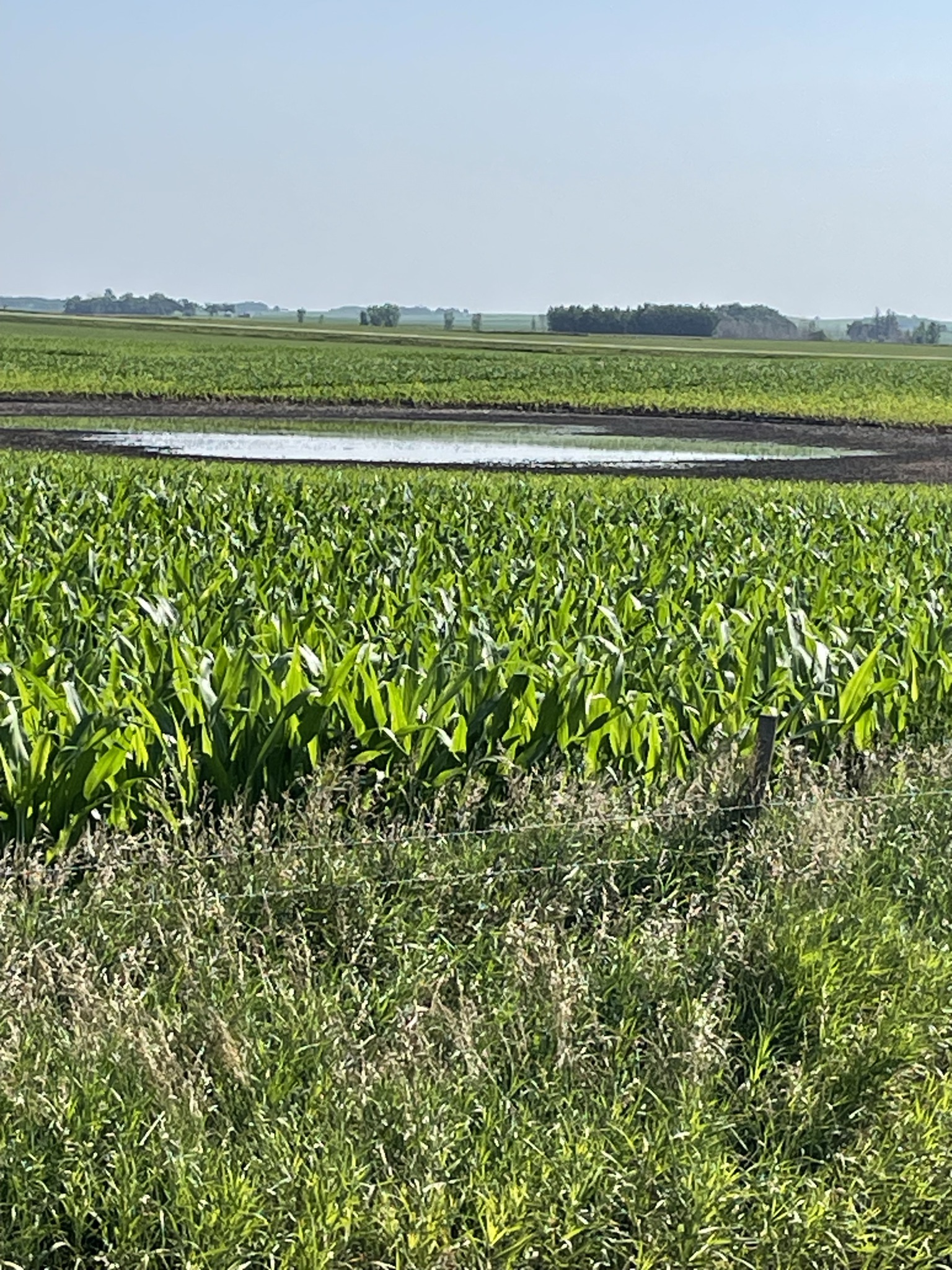CORN HYBRIDS ARE RESILIENT; STICK WITH YOUR CROP PLAN
Key points
- Variable weather across the Corn Belt has farmers rethinking their management.
- To optimize yield, stick with your corn management plan and regularly scout fields.
- Planting a mix of corn hybrids better prepares you for variable weather.
There’s been an abundance of weather challenges in Iowa and Ohio, but agronomists in the states haven’t given up on crops. In fact, AgriGold Agronomists Scott Bugg (Ohio) and Jeff Morey (Iowa) believe farmers in their respective areas could still turn out great corn yields — IF they stick with their management plans from the start of the season.
“Today’s corn hybrids are resilient,” Bugg says, urging farmers not to skimp on inputs.
Spring planting delays
There were a wide range of planting dates for farmers in Iowa and Ohio. Planting kicked off amid nice weather in early April, but conditions turned cool and wet. That pushed planting into late May/early June.
After that, Ohio conditions turned hot and dry. “A lot of the corn planted in less-than-ideal conditions has restricted root zones,” Bugg says. That was evident during the hot, dry spell. Timely rain will be important for those early-planted corn fields.
Some of Ohio’s earliest-planted corn is tasseling but notably short — the result of the abrupt shift from cool and wet to hot and dry. But fields planted in late May have a tabletop appearance and near-perfect stands, according to Bugg. He has high hopes for late-planted corn.
Morey reports areas of his territory known as “pothole country” could not catch a break this spring, with some wet areas replanted as many as two times. He says, “Those areas would dry up enough to plant, but within a week there’d be another rain event resulting in standing water.”
Major flooding in Iowa
And that was just the start. On June 24, as many as 13 inches of rain fell in northwest areas of Iowa, leading to devastating flooding in Morey’s hometown of Spencer, where two rivers converge. He estimates thousands of acres of corn and soybeans in the area were drowned out. The conversation has now shifted to planting cover crops to get a living plant in those flooded corn and soybean fields.

Morey’s advice to farmers with saturated soils is to step back and look beyond the worst of the field. “Yes, there are some fields where half or all the field is gone. But if that’s not you, let’s focus on the good parts of that field and maximize the yield in those areas where we still have a good crop standing.”
Make the most of the crop you have
Both agronomists have been fielding calls from farmers debating whether to pull back their investment in the crop. “We have a good-looking corn crop outside of those drowned-out areas,” Morey says. “Making those applications still looks like the right investment.”
Both agronomists emphasize the importance of fungicide applications this season. “Some farmers planted in front of a cold, wet spell, and that corn didn’t emerge for several weeks and was a little stressed when it came up,” Morey says. “We may have some disease infections that just haven’t shown up yet.
“Outside of the flooded areas, we’ve had favorable growing conditions,” Morey continues. “But if we start to stress that plant again with unfavorable weather, nutrient deficiency or insects, disease can rear its head. Because of the stress put on the crop earlier this season and the fact we could still produce a phenomenal crop, I would plan on a fungicide application."
Tar spot has made Bugg see fungicide as more of a necessity in recent years. “We’re now in Year 4 of tar spot. We know we’re going to get it. The question is, when?” Bugg says. “Farmers are seeing benefits of protecting the plant and prolonging grain fill with the use of fungicides in these tar spot areas.”
This season has also resulted in extended periods of leaf wetness, conditions that can set the stage for many diseases, Morey observes. He urges farmers to get into fields and be on the watch for threats like tar spot, gray leaf spot, Physoderma brown spot and northern corn leaf blight — especially as crops near tassel.
Corn may need additional nitrogen
Farmers should also be on the lookout for nutrient deficiencies, especially in areas that have been too wet. While the window has passed for late-spring nitrogen testing, Morey says farmers could do some tissue sampling to gauge nutrient levels within the plant.
After heavy rains, sidedress applications may be needed, Morey says. He also encourages farmers to pay attention to how their hybrids prefer nitrogen. Some hybrids do best when nitrogen is applied upfront; others respond best to split applications.
Bugg also encourages Ohio farmers who planted early and went through wet periods to consider supplementing nitrogen ahead of tassel to boost crop resilience. “Here in Ohio, we can lose bushels fast,” he says. “That’s why it’s important to stick with fungicide and fertility plans.”
Diverse genetics key to resilient crops
“Crop resilience starts with seed selection,” Morey says. Choosing genetically diverse corn seed with a range of agronomic and performance strengths better prepares them for whatever the growing season holds. “You can’t outguess Mother Nature,” he says. “But you can manage to the best of your ability.”
That means planting a mix of corn hybrids that will handle a variety of weather challenges and disease pressures. It means optimizing your nitrogen applications. And it means placing those hybrids on acres where their strengths are optimized.
Want more support getting the most out of every acre on your farm? Reach out to your local AgriGold agronomist.



